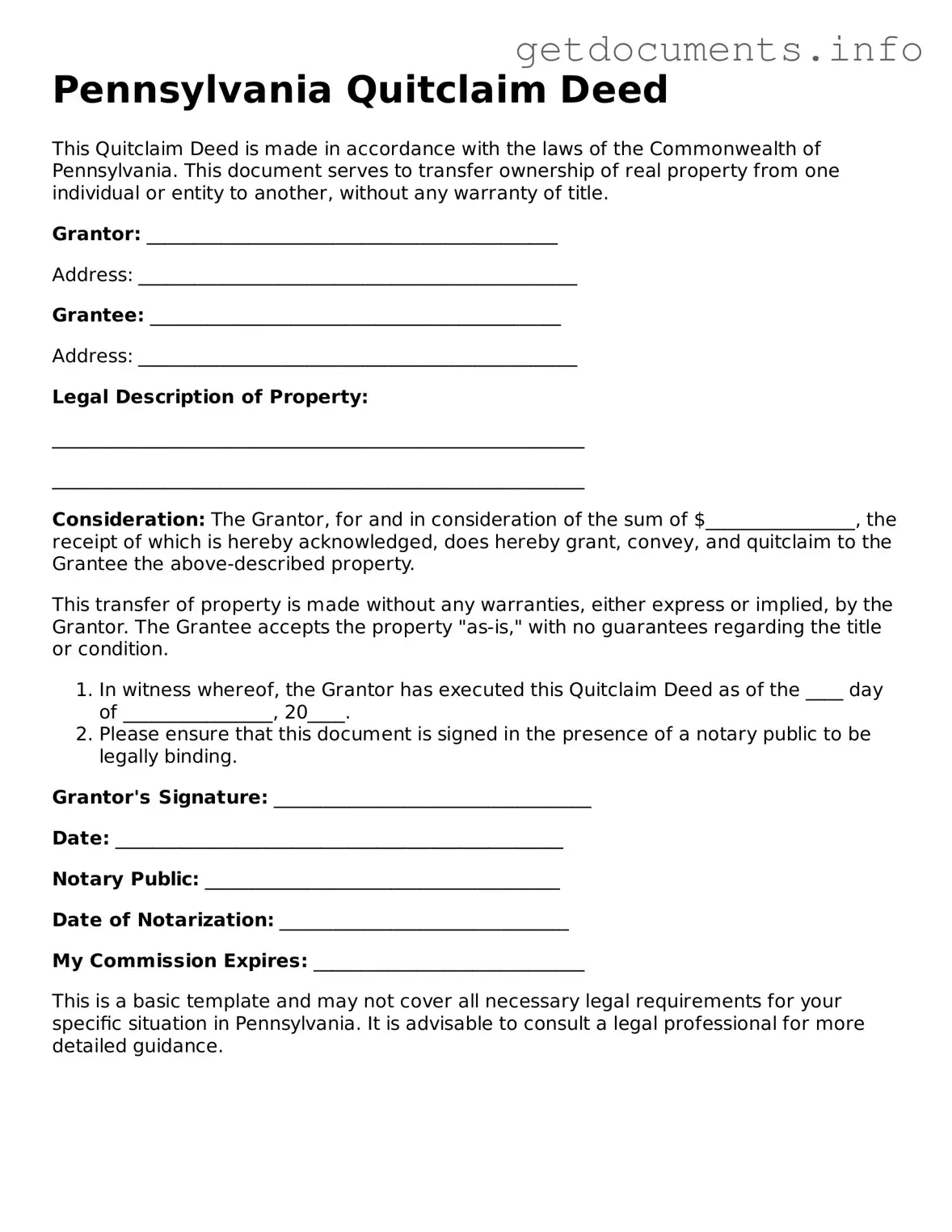The Pennsylvania Quitclaim Deed form serves as a crucial legal instrument in real estate transactions, facilitating the transfer of property ownership without the guarantee of clear title. This form is particularly useful when the transfer occurs between family members, friends, or in situations where the grantor may not be able to provide a warranty of title. Unlike other types of deeds, such as warranty deeds, a quitclaim deed does not offer any assurances regarding the property's condition or the absence of liens. It allows the grantor to relinquish any claim they may have to the property, effectively passing on their interest to the grantee. The simplicity of this form makes it an attractive option for many individuals, especially in informal transfers. However, it is important for both parties to understand the implications of using a quitclaim deed, as it can have significant legal and financial consequences. Proper completion of the form, including the necessary signatures and notarization, is essential to ensure that the transfer is legally binding and recognized by the state. Understanding these key aspects can help individuals navigate the complexities of property transfers in Pennsylvania.
